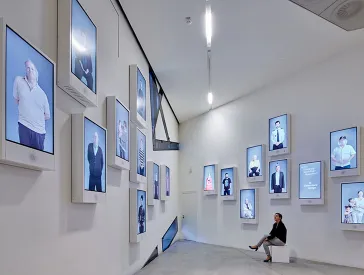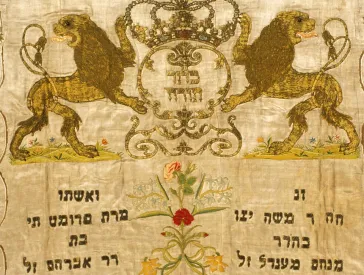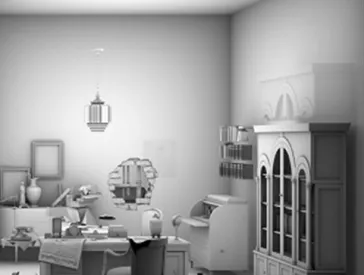What We Won’t Show You...
Film Series from 2009 with Insights into the Work of our Museum
The objects a museum displays are significant. But what museums won’t show you can be equally revealing. In these film clips, staff of the Jewish Museum Berlin talk about what you won’t see, thereby shedding light on German-Jewish life, on collecting, restoring, presenting as well as on ethical questions and political debates.
-
Program Director Cilly Kugelmann explains why, as a museum of history, we must exercise special vigilance in our use of photographs, which is also why we do not display any enlarged photographs of the Holocaust.
-
Our visitors also influence what we put on display and what we leave out. Maren Krüger, Curator of the museum’s Permanent Exhibition, explains this using the example of the Prussian Edict to emancipate the Jews from 1812.
-
At the Jewish Museum Berlin, we approach German-Jewish history and culture from a Jewish perspective. Why are the antisemitic representations we display in our exhibition so highly restricted? Why don’t we collect antisemitic artifacts? Leonore Maier, Curator of Material Culture, explains.
-
Archive staff member Dr. Manfred Wichmann explains why we do not grant public access to the medical records of Dr. Hirschberg’s patients.
-
Displaying film clips in an exhibition can be very complicated and expensive – and sometimes it doesn’t work out at all. Dr. Gerhard Stahr, our Head of Rights Management, explains why, using the example of Mel Gibson’s film The Passion of the Christ.
-
Inka Bertz, Curator of Art and our Head of Collections, explains why we don’t display the holdings we have in storage and the alternative ways that we make the objects in our collection available to visitors.
-
We cannot display representations of the Holocaust. Dr. Mirjam Wenzel, Head of the Media Department, explains why.
-
Our painting restorer Barbara Decker explains why we cannot put the Torah curtain made of Fromet Mendelssohn’s wedding dress on permanent display in our exhibition.
-
We don’t perform any ritual acts at the Jewish Museum Berlin. Tanja Petersen, Head of our Education Department, explains why.
Citation recommendation:
Jewish Museum Berlin (2009), What We Won’t Show You.... Film Series from 2009 with Insights into the Work of our Museum.
URL: www.jmberlin.de/en/node/3915



